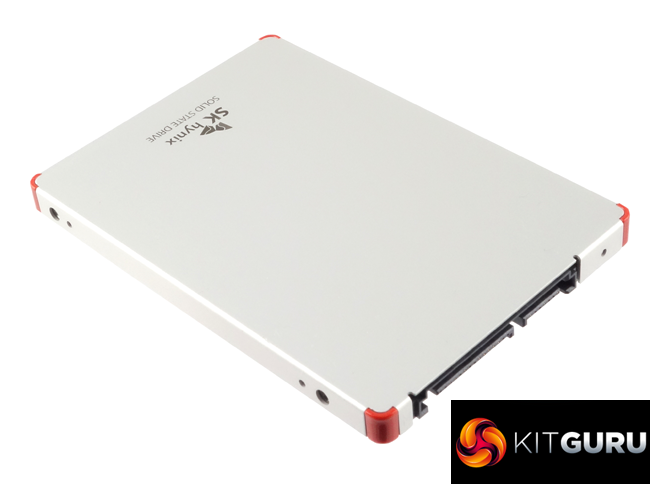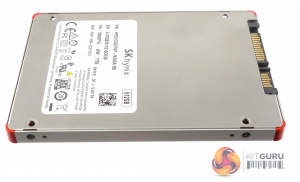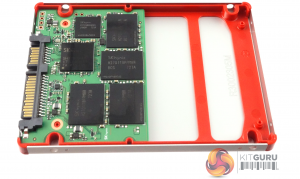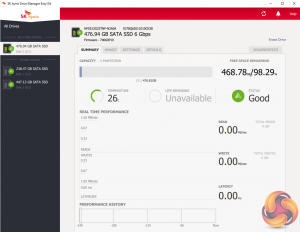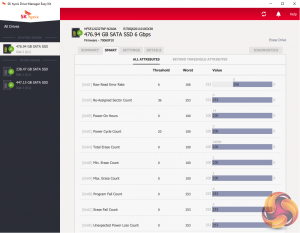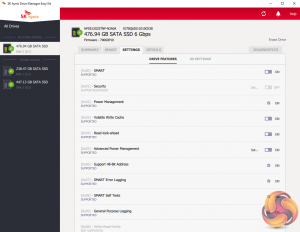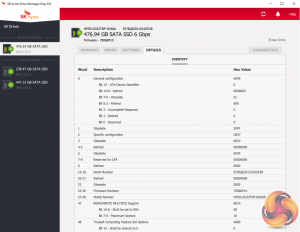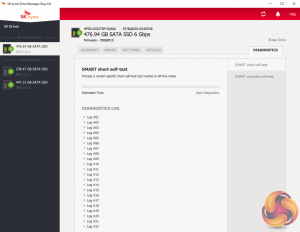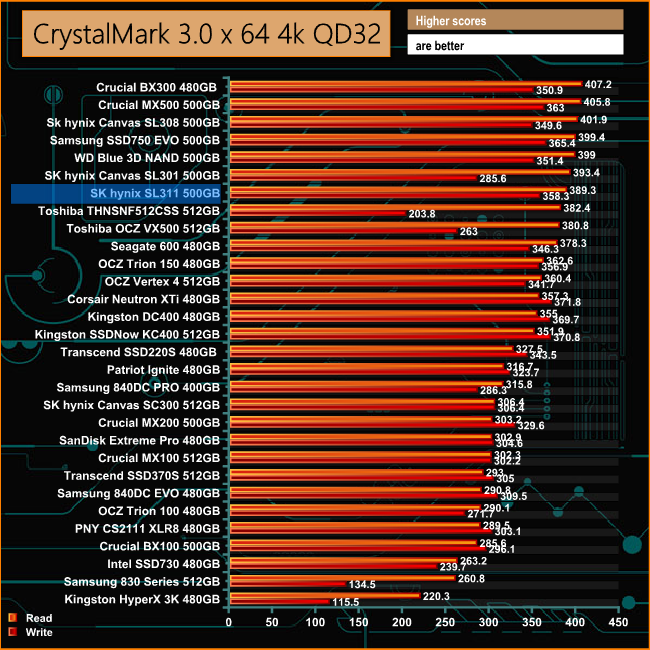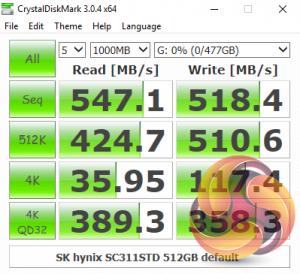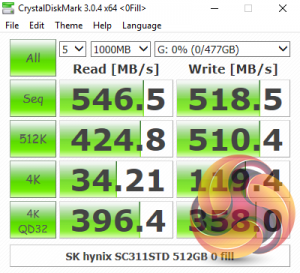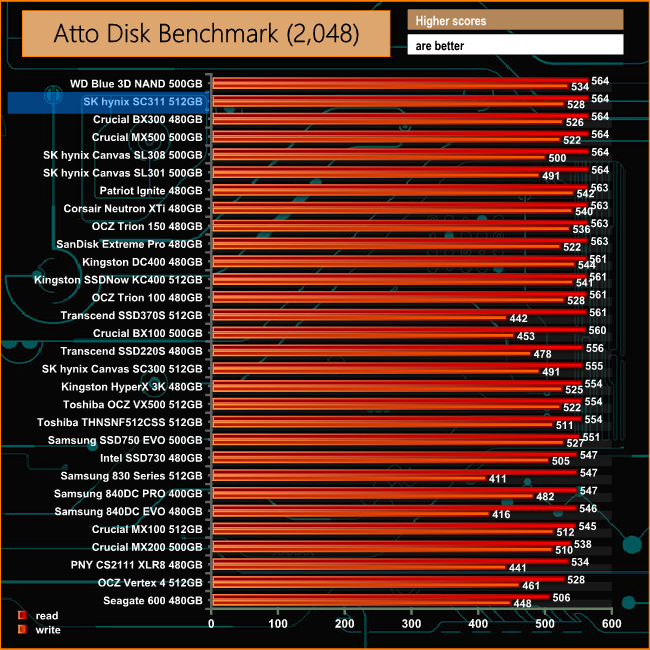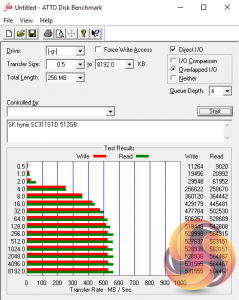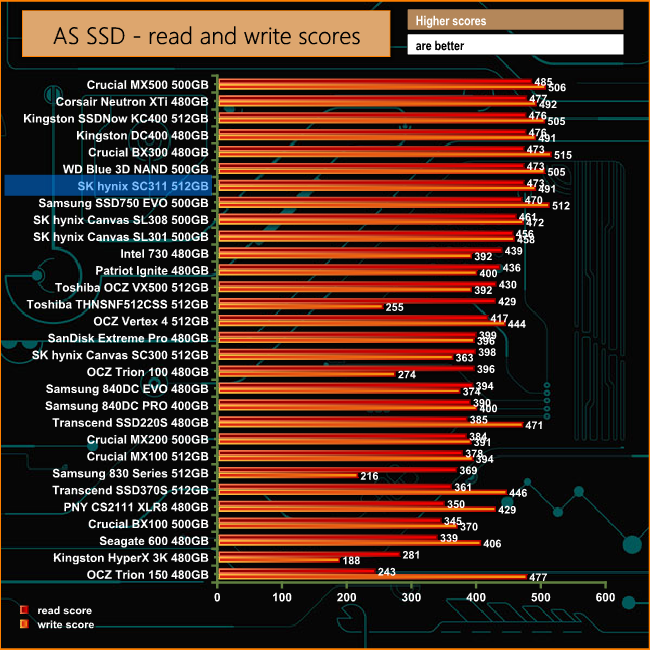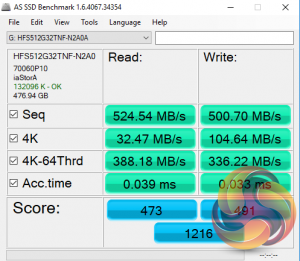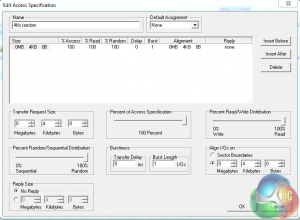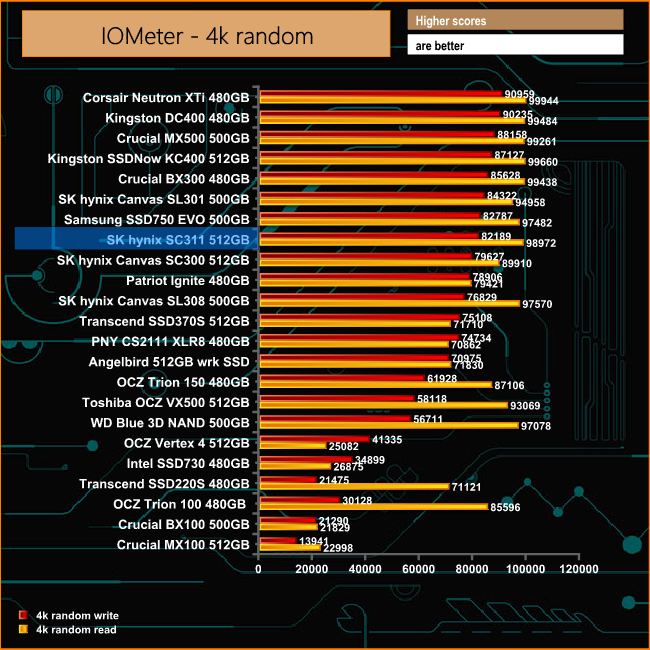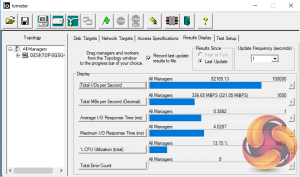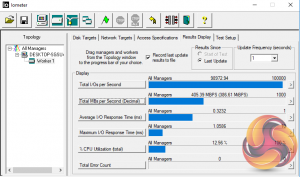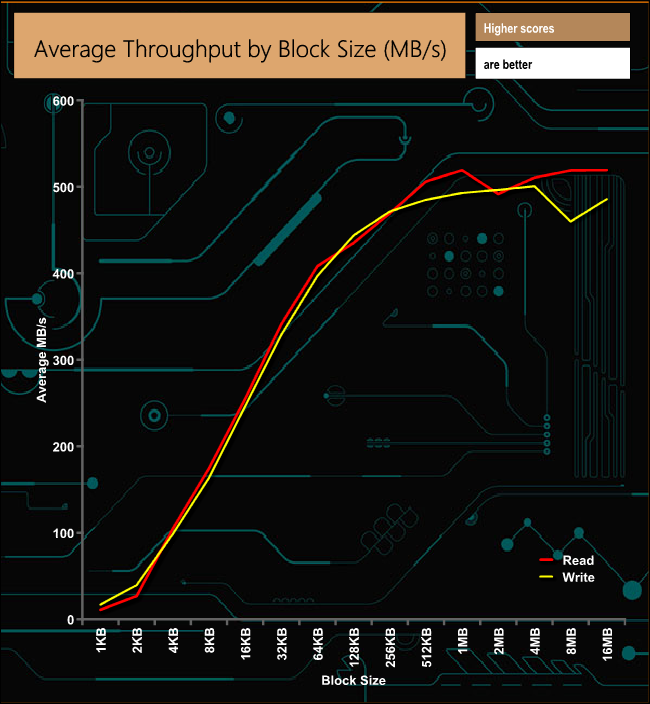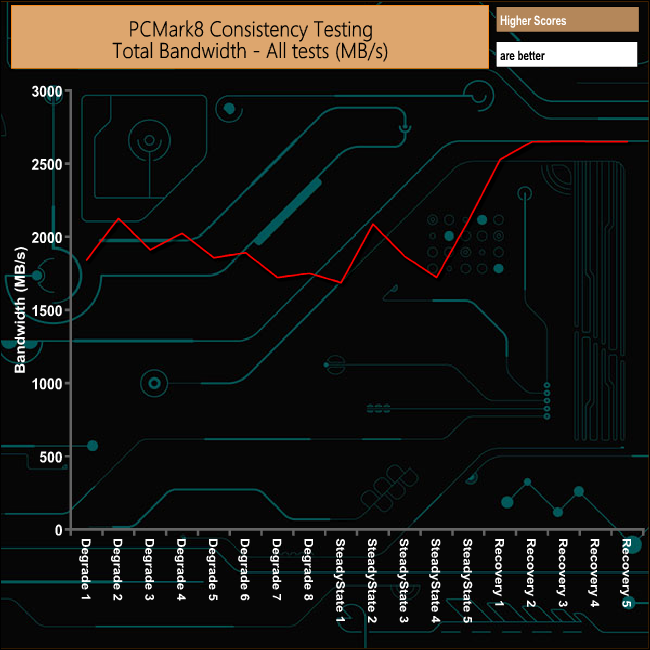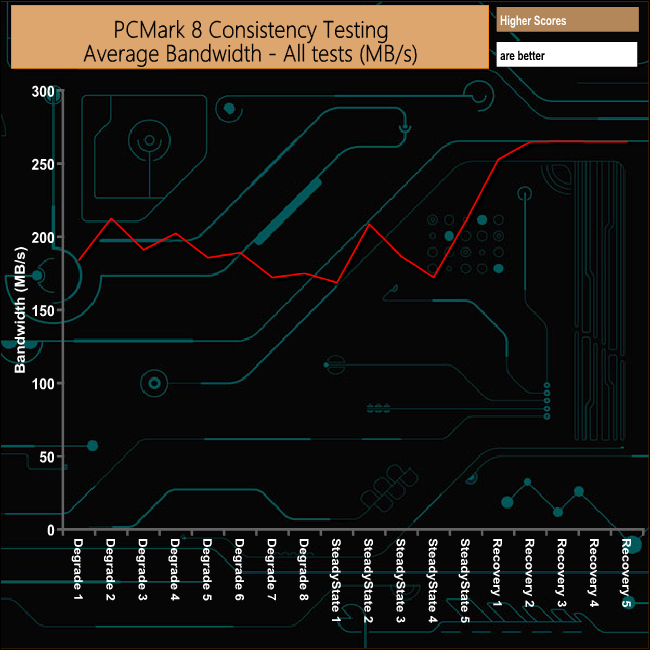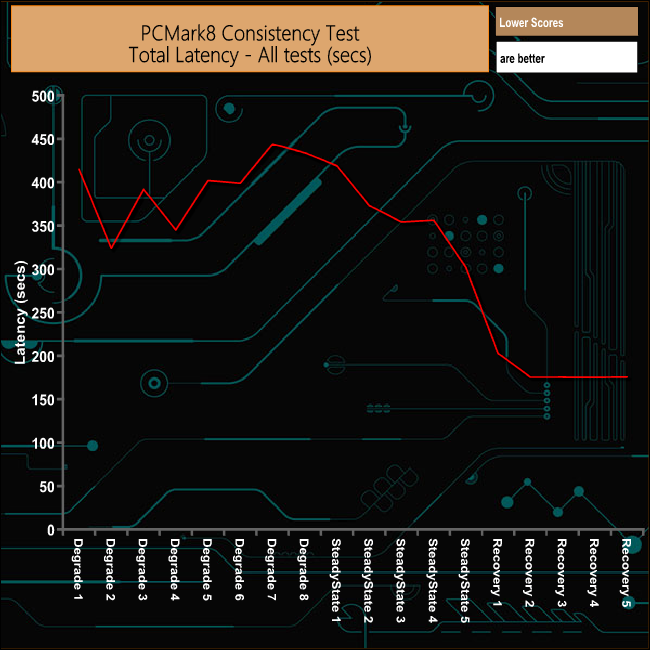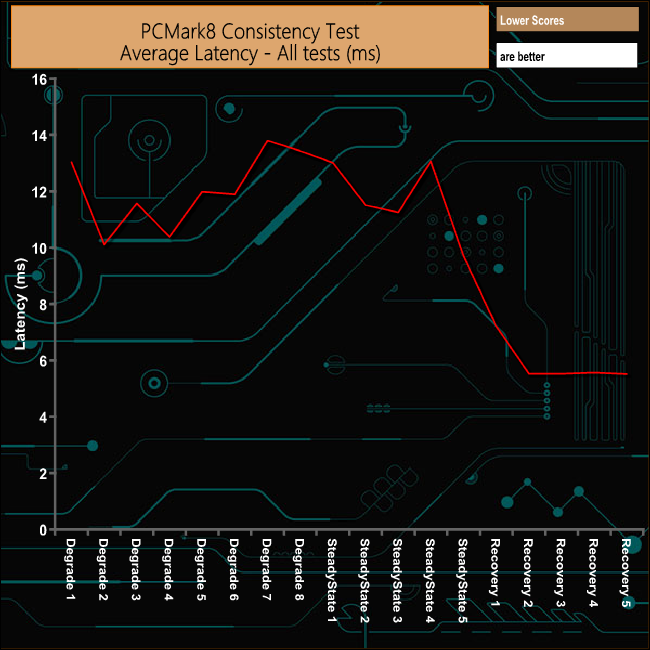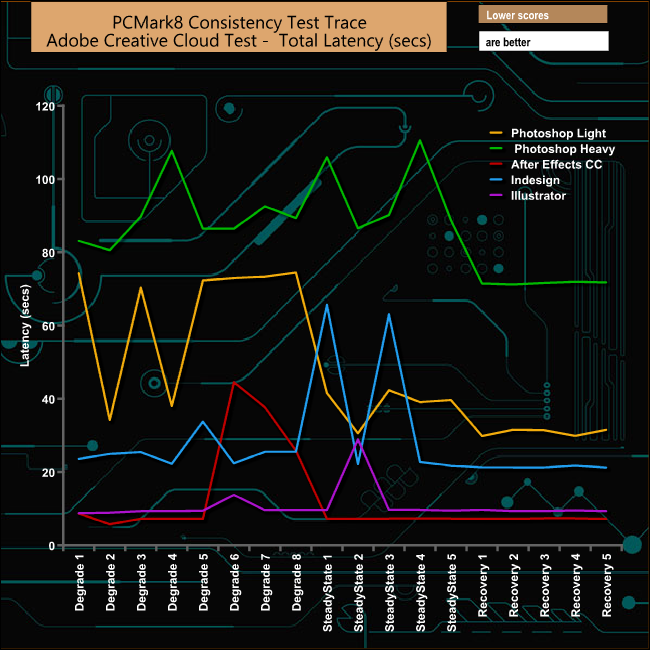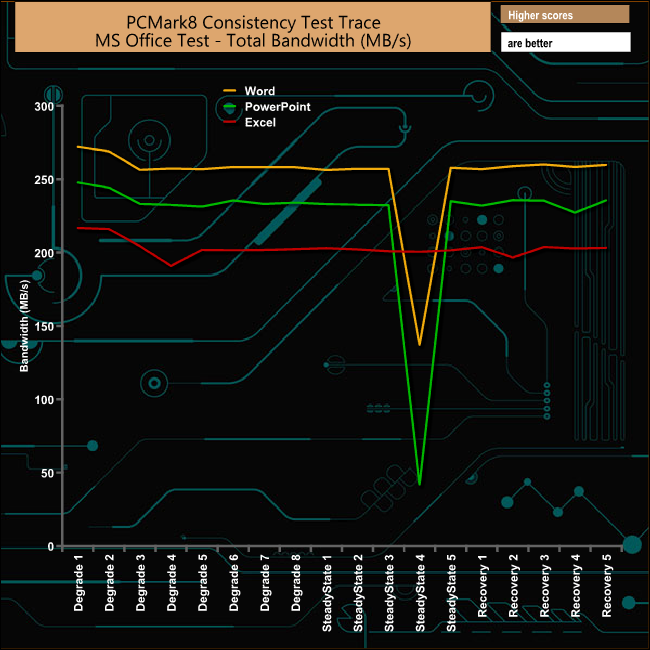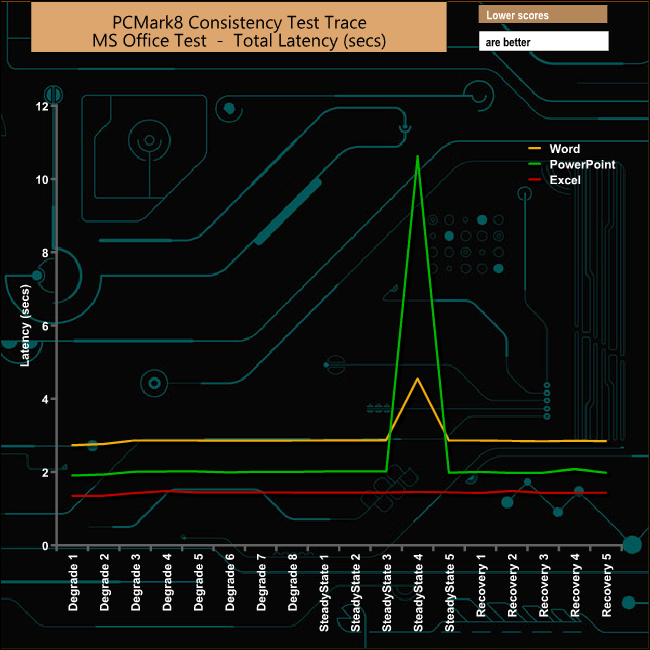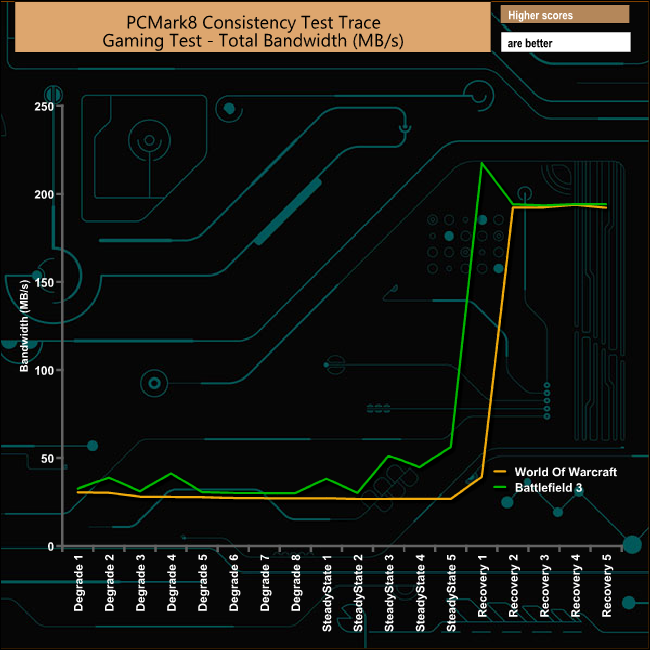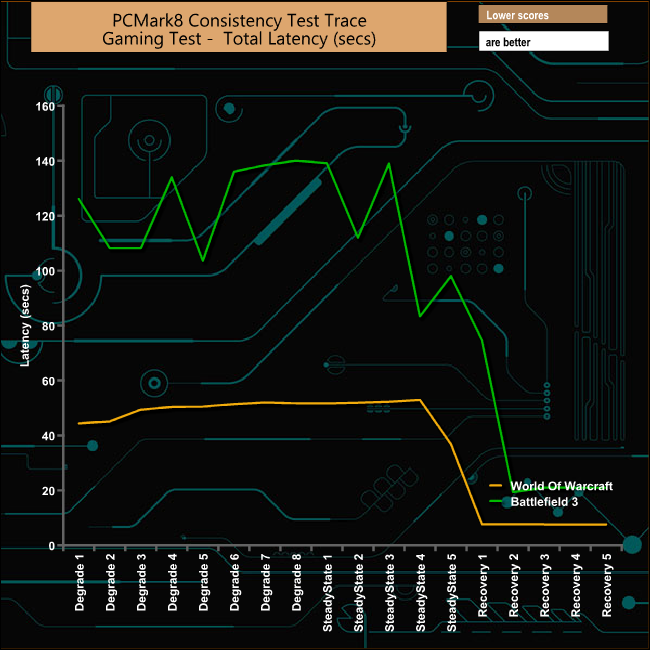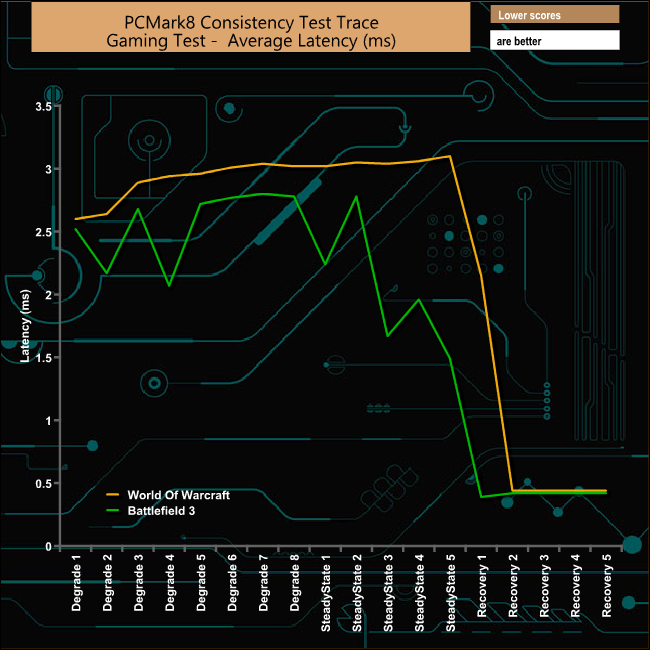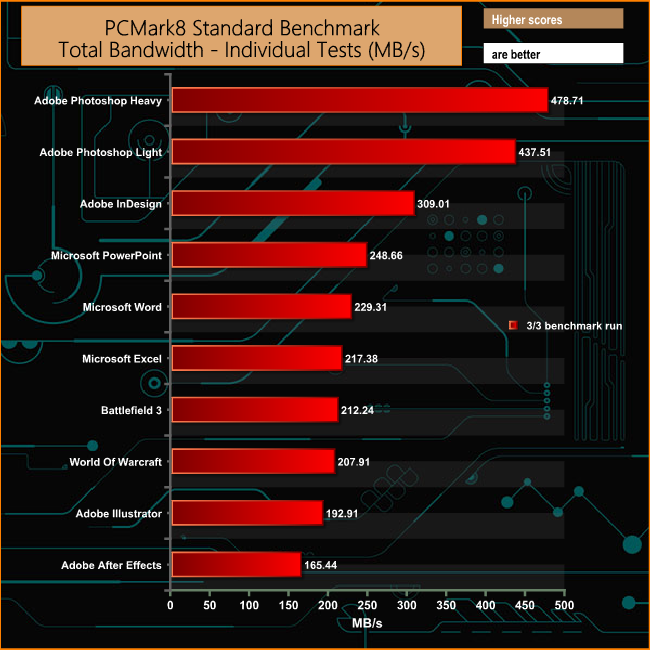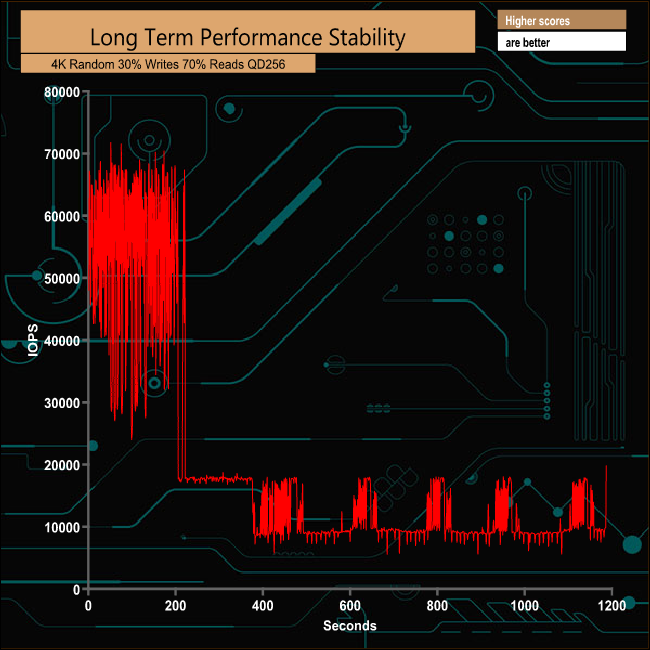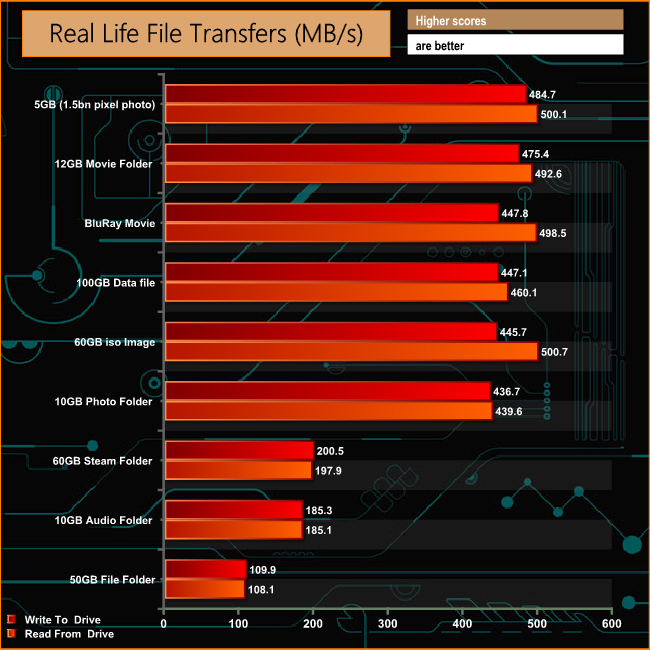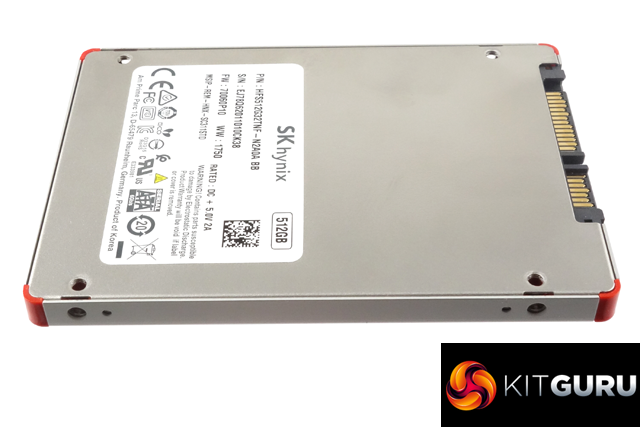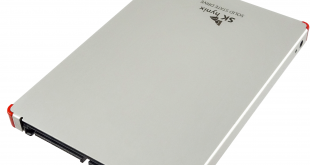
SK hynix are one of the very few SSD manufacturers in the enviable position of being able to produce all the major components of a drive – controller, NAND and cache – in-house, allowing them to control every aspect of the drives hardware while keeping a firm hand on production costs. The latest consumer drive range to emerge from SK hynix is the SC311 using the company's V3 48-layer 3D TLC NAND technology.
The new SC311 drive uses the SK hynix SH87820BB 8-channel controller that we saw in the SL308 drive but this time combined with the company's latest 48-layer 3D TLC NAND. There are four drive capacities in the SC311 range; 128GB, 256GB, 512GB (our review sample) topping out with the flagship 1TB model.
Official sequential read/write performance for the 512GB model is quoted as reads up to 540MB/s and writes up to 530MB/s. The 256GB and 1TB models have the same read figure with the 128GB drive quoted as up to 500MB/s. Write performance for the rest of the range is quoted as up to 530MB/s for the 1TB drive, 480MB/s for the 256GB and 270MB/s for the 128GB model.
Random 4K performance is listed as up to 100,000 IOPS reads and 90,000 IOPS writes for the 512GB and 1TB models. The 256GB drive has the same 90,000 IOPS write figure but with reads at 70,000 IOPS. The entry 128GB model has a read figure of up to 40,000 IOPS with 60,000 IOPS for writes.
Endurance for the 512GB model is quoted at 300TB TBW and SK hynix back the drive with a 3-year warranty.
Physical Specifications:
- Usable Capacities: 512GB
- NAND Components: SK hynix 48-layer V3 3D TLC NAND
- NAND Controller: SK hynix SH87820BB
- Cache: SK hynix H9T0NNN4GOAL
- Interface: Serial ATA (SATA) 6Gb/s (SATA III)
- Form Factor: 2.5in, 7mm
- Dimensions: 69.85 x 100 x 7mm
- Drive Weight: 61g
Firmware Version: 70060P10
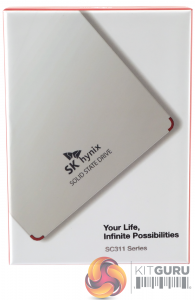
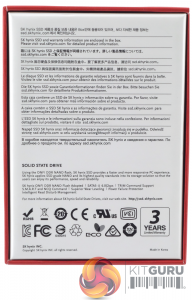
The SC311 comes in a good quality box with a large image of the drive on the front. The rear of the box has an expansive multilingual section detailing that the warranty information is in the box.
Our drive came in an early version of the retail box so didn't have the warranty information inside.
Built on a standard 2.5in, 7mm format, the SC311uses a metal enclosure with red plastic corners.
The reason for the red corners becomes apparent once the clips that hold the enclosure together are released. They are part of an inner plastic cage that supports the PCB. The half size PCB doesn’t come anywhere close to filling the enclosure.
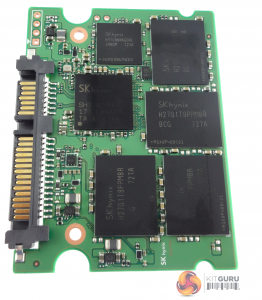
All the drives components are in-house SK hynix parts and are built on one side of the PCB. The 512GB drive uses four 1024Gb 3D TLC NAND packages (labelled H27Q1T8PPM8A). To the left of the NAND is the SK hynix SH87820BB 8-channel controller with the single LPDDR2 cache chip sitting above it.
SK hynix’s SSD management software is called Drive Manager Easy Kit. With it you can monitor the life of the drive, its temperature, check the SMART details and diagnose any problems with the drive. It also allows the drive’s firmware to be updated and to be securely erased or sanitised.
The one thing that is missing from the package is a cloning tool but never fear, one is available as a separate download. However, it would be nice to see it included in the Drive Manager software as a feature.
For testing, the drives are all wiped and reset to factory settings by HDDerase V4. We try to use free or easily available programs and some real world testing so you can compare our findings against your own system. This is a good way to measure potential upgrade benefits.
Main system:
Intel Core i7-7700K with 16GB of DDR4-3200 RAM, Sapphire R9 390 Nitro and an Asus Prime Z270-A motherboard.
Other drives
Corsair Neutron XTi 480GB
Crucial BX100 500GB
Crucial BX300 480GB
Crucial MX100 512GB
Crucial MX200 500GB
Crucial MX500 500GB
Intel SSD730 480GB
Kingston HyperX 3K 480GB
Kingston SSDNow KC400 512GB
OCZ Trion 100 480GB
OCZ Trion 150 480GB
Patriot Ignite 480GB
PNY CS2111 XLR8 480GB
Samsung SSD750 EVO 500GB
Samsung 830 512GB
Samsung 840DC EVO 480GB
Samsung 840DC PRO 400GB
SanDisk Extreme Pro 480GB
Seagate 600 480GB
SK Hynix Canvas SL300 512GB
SK Hynix Canvas SL301 500GB
SK Hynix Canvas SL308 500GB
Toshiba THNSNF512GCSS 512GB
Toshiba OCZ VX500 512GB
Transcend SSD220S 480GB
Transcend SSD370S 512GB
WD Blue 3D NAND 500GB
Software:
Atto Disk Benchmark.
CrystalMark 3.0.3.
AS SSD.
IOMeter.
Futuremark PC Mark 8
All our results were achieved by running each test five times with every configuration this ensures that any glitches are removed from the results. Trim is confirmed as running by typing fsutil behavior query disabledeletenotify into the command line. A response of disabledeletenotify =0 confirms TRIM is active.
CrystalDiskMark is a useful benchmark to measure theoretical performance levels of hard drives and SSDs. We are using V3.0.3.
When it comes to dealing with small bity files at a fairly deep queue depth, the SC311 falls just shy of the two SK hynix drives we've previously reviewed, the SL301 and SL308, when it comes to read performance. However, the new drive has better write performance than both the previous drives.
The ATTO Disk Benchmark performance measurement tool is compatible with Microsoft Windows. Measure your storage systems performance with various transfer sizes and test lengths for reads and writes. Several options are available to customize your performance measurement including queue depth, overlapped I/O and even a comparison mode with the option to run continuously.
Use ATTO Disk Benchmark to test any manufacturers RAID controllers, storage controllers, host adapters, hard drives and SSD drives and notice that ATTO products will consistently provide the highest level of performance to your storage.
The official sequential read/write figures for the 512GB SK hynix SC311 are up to 540MB/s and 530MB/s respectivley. Using the ATTO benchmark the review drive bettered the official read score by some 26MB/s at 564MB/s reads. The tested write figure was slightly behind the official maximum figure at 528MB/s.
AS SSD is a great free tool designed just for benching Solid State Drives. It performs an array of sequential read and write tests, as well as random read and write tests with sequential access times over a portion of the drive. AS SSD includes a sub suite of benchmarks with various file pattern algorithms but this is difficult in trying to judge accurate performance figures.
In the AS SSD benchmark, the new SC311 drive outperforms the two previous SK hynix models, particularly when it comes to the write performance.
IOMeter is another open source synthetic benchmarking tool which is able to simulate the various loads placed on hard drive and solid state drive technology.
We test with both random read and write 4k tests, as shown above. There are many ways to measure the IOPS performance of a solid state drive, so our results will sometimes differ from manufacturer’s quoted ratings. We do test all drives in exactly the same way, so the results are directly comparable.
When it comes to random 4K performance, the official figures for the 512GB SC311 are up to 100,000 IOPS for reads and 90,000 IOPS for writes. Using our 4K IOMeter tests we couldn't match that top figure for either but with reads of 98,972 IOPS and 82,189 IOPS for writes, the review drive was still well in the ball park for both.
In our throughput test both reads and writes suffered a dip in performance towards the end of the test, but both recovered quickly. Peak performance for reads came right at the end of the test where it averaged 519MB/s while writes peaked at the 4MB block size at 500MB/s.
Futuremark’s PCMark 8 is a very good all round system benchmark but it’s Storage Consistency Test takes it to whole new level when testing SSD drives. It runs through four phases; Preconditioning, Degradation, Steady State, Recovery and finally Clean Up. During the Degradation, Steady State and Recovery phases it runs performance tests using the 10 software programs that form the backbone of PCMark 8; Adobe After Effects, Illustrator, InDesign, Photoshop Heavy and Photoshop Light, Microsoft Excel, PowerPoint, Word, Battlefield 3 and World of Warcraft. With some 18 phases of testing, this test can take many hours to run.
Preconditioning
The drive is written sequentially through up to the reported capacity with random data, write size of 256 × 512 = 131,072 bytes. This is done twice.
Degradation
Run writes of random size between 8 × 512 and 2048 × 512 bytes on random offsets for 10 minutes. It then runs a performance test. These two actions are then repeated 8 times and on each pass the duration of random writes is increased by 5 minutes.
Steady State
Run writes of random size between 8 × 512 and 2048 × 512 bytes on random offsets for final duration achieved in degradation phase. A performance test is then run. These actions are then re-run five times.
Recovery
The drive is idled for 5 minutes. Then a performance test is run. These actions are then repeated five times.
Clean Up
The drive is written through sequentially up to the reported capacity with zero data, write size of 256 × 512 = 131,072 bytes.
Although the drive gets hit pretty hard during the test run, dropping as low as 168.62MB/s at the start of the Steady State runs from a peak of 212MB/s near the beginning of the test, it recovers very well averaging 262.64MB/s across the five Recovery runs.
PCMark 8’s Consistency test provides a huge amount of performance data, so here we’ve looked a little closer at how the CS311 performs in each of the benchmarks test suites.
Adobe Creative Cloud
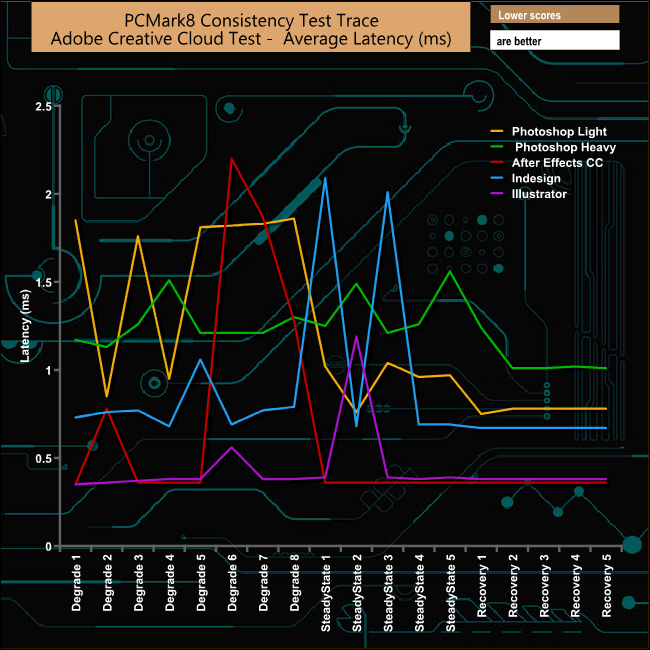
In the Adobe CC suite of tests, the CS311 seems to deal best with the Photoshop Heavy test which is a surprise as it's this test trace, more often than not that causes drives the most problems. Although the drive gets hit hard during the Degradation and Steady State phases, it does recover from the ordeal very well.
Microsoft Office

In both the Word and PowerPoint traces of the Microsoft Office test runs there is a real hit in performance in the fourth SteadyState run, the drive plummeting to 137MB/s from the 256MB/s of the third run during the Word test. The hit in performance for the PowerPoint traces is even deeper, going from 232.69MB/s in the third run to a mere 41.93MB/s in the fourth. However the drive bounces back from both of these very quickly and recovers overall from the tests very well.
Casual Gaming
During the casual gaming runs the drive acts very strangely in both traces with low bandwidths and high latency throughout the tests. That is until the recovery stages, when it suddenly wakes up and starts to deliver high bandwidths and low latencies.
Just like the Consistency test, PCMark 8’s standard Storage test also saves a large amount of performance data. The default test runs through the test suite of 10 applications three times. Here we show the total bandwidth performance for each of the individual test suites for the third and final benchmark run.
The drive produces a solid set of results in the standard PCMark 8 storage test, particularly in the two tough Photoshop tests.
For the long term performance stability test, we set the drive up to run a 20-minute 4K random test with a 30% write, 70% read split, at a Queue Depth of 256 over the entire disk. The 512GB SC311 averaged 19,757 IOPS for the test with a performance stability of 29.43%.
To test real life performance of a drive we use a mix of folder/file types and by using the FastCopy utility (which gives a time as well as MB/s result) we record the performance of drive reading from & writing to a 256GB Samsung SSD850 PRO.
We use the following real life folder/file types:
- 100GB data file.
- 60GB ISO image.
- 60GB Steam folder – 29,521 files.
- 50GB file folder – 28,523 files.
- 12GB movie folder – 24 files (mix of Blu-ray and 4K files).
- 10GB photo folder – 621 files (mix of .png, raw and .jpeg images).
- 10GB audio folder – 1,483 files (mix of mp3 and .flac files).
- 5GB (1.5bn pixel) photo.
The drive deals with large file sizes much better than it does with the small bity files contained in the 60GB Steam, 50GB file and 10GB audio folders.
SK hynix are on a bit of a roll at the moment after recently announcing a range of the world's first 72-layer NAND drives for the enterprise segment, and hopefully this technology will seep down the food chain to the consumer segment.
Talking of the consumer segment, the company have been busy here too, building on the success of the SL301 and SL308 drives with the SC311 range which brings the company's latest 48-layer V3 3D TLC NAND to the party.
SK hynix quote sequential read/write figures for the drive as up to 540MB/s & 530MB/s respectively – figures which were confirmed by the ATTO benchmark. When tested, the drive produced a 564MB/s read speed which is the same figure as the previous SL308 and SL301 drives. Write speed came in at 528MB/s, which is just below the maximum official figure, but is still faster than either the SL308 or SL301.
When it comes to random 4K performance, the official figures for the 512GB SC311 are up to 100,000 IOPS for reads and 90,000 IOPS for writes. Under test conditions using our 4K IOMeter tests we couldn't quite match that top figure for either with reads of 98,972 IOPS and 82,189 IOPS for writes.
Elsewhere, SK hynix’s drive management software is a very useful download. It may not be as comprehensive as competitor software (such as that available from Samsung or Crucial) but it is intuitive and stable. That said, we do feel that the cloning tool should be integrated into the main package rather than available as a separate download.
On the whole, the SK hynix SC311 is a solid consumer SSD that improves over the previous SL308 and SL301 drives.
Buy from Scan in the UK for £122.48 inc vat HERE
and you can buy the full range of SC311 from Novatech HERE
Pros
- 48-layer 3D TLC NAND.
- Overall performance.
Cons
- 3 year warranty is a bit mean.
- Drive cloning software still not part of the Drive Manager Easy Kit utility.
Kitguru says: The 500/512GB market segment is a very crowded one, but SK hynix has the massive advantage of having all the major components of a SSD drive in-house which gives them plenty of arm wrestling room when it comes to pricing the SL311 against its competitors.
 KitGuru KitGuru.net – Tech News | Hardware News | Hardware Reviews | IOS | Mobile | Gaming | Graphics Cards
KitGuru KitGuru.net – Tech News | Hardware News | Hardware Reviews | IOS | Mobile | Gaming | Graphics Cards


